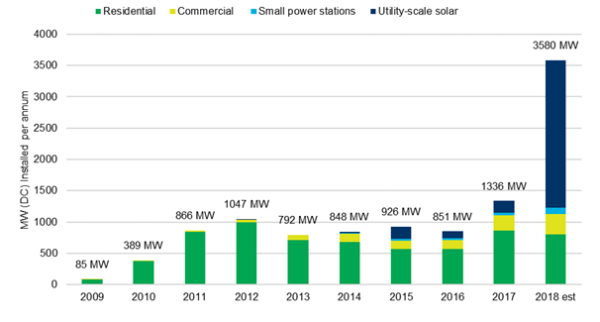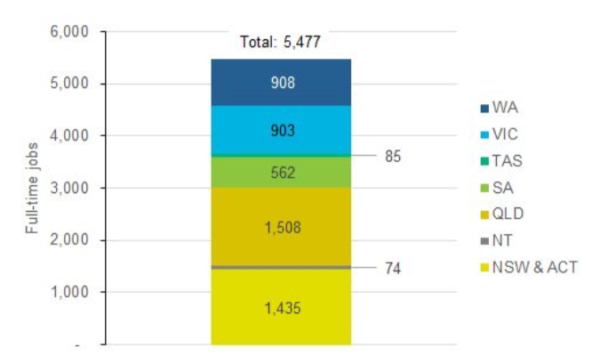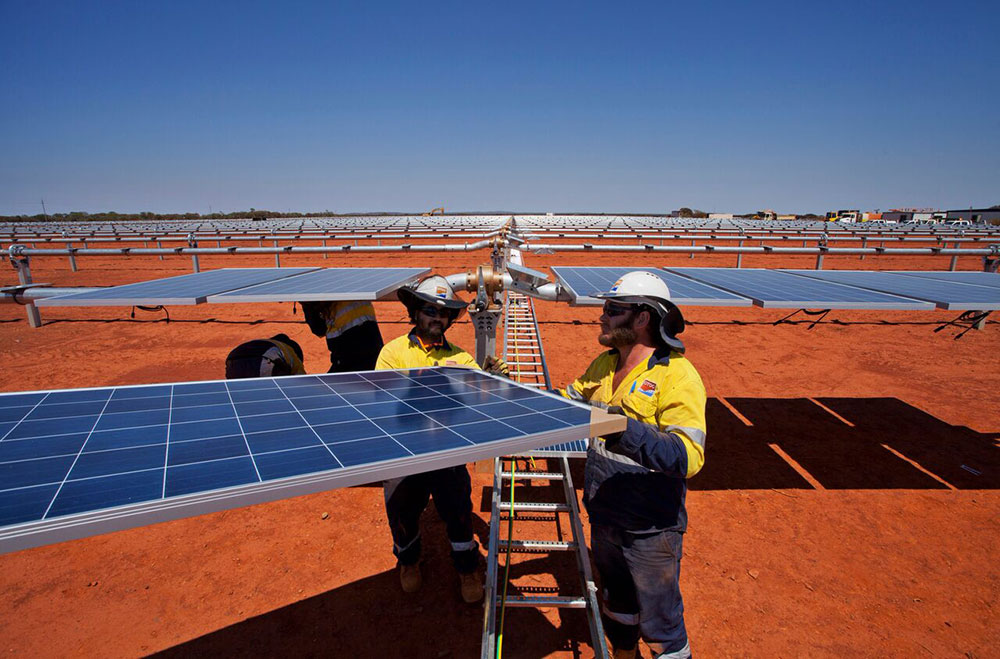2017 represents a watershed year for the Australian renewable energy industry, and this means jobs. With around 4.42 GW of large scale projects currently under construction, more than 15,000 people are being put to work.
The results were published today by Green Energy Markets in its Renewable Energy Index December 2017 report.
Of the 4.42 GW total, over 1.8 GW of large scale solar projects are currently being built, employing around 4,400 people.

Rooftop solar, on the back of a record-setting 2017, is also proving to be a job creator with around 4,500 people installing some 16,250 PV arrays over the course of the year.
The growth in jobs in rooftop solar in 2017 has been outstanding. While 3,225 people were employed in rooftop solar sales and installation, that number increased almost 40% year-on-year.
“2018 rooftop solar sales are expected to only modestly grow on 2017 installs, so I don’t expect another big leap up in rooftop solar employment,” says Green Energy Markets Director, Analysis and Advisory, Tristan Edis. “However, in utility scale solar we’ve got a big pipeline of projects undergoing construction and there will be a lot more likely to be committed – once you take into account that there are some substantial projects that have secured PPAs but haven’t yet reached financial close.”
The leading state for large scale renewable job creation in 2017 was Queensland, followed by Victoria and New South Wales (NSW). Victoria overtook NSW on the jobs front last month, largely on the back of the construction of the 530 MW Stockyard Hill wind project.

Green Energy Markets
Regional and rural communities are in line to benefit most from the new jobs renewables are delivering. Unfortunately, the good-news story is one that National Party parliamentarians, frequently opponents to renewables, appear unwilling to acknowledge.
“All of the utility scale projects will of course be located in rural and regional areas and are particularly focussed on northern Queensland, and inland NSW and Queensland – basically a long way from Australia’s major cities,” Edis adds.
“In terms of rooftop solar, we know that rural Australia has vastly higher concentration of solar installs per head of population so they will see a disproportionate share of the jobs relative to population. I think it’s also worth pointing out that outer urban suburbs, which tend to be the marginal seats in parliament that determine who takes government, are the other hot spot for solar installs.”
Green Energy Markets Edis notes that on the federal level, National Party MPs look like they are deferring to energy ideology over employment.
“One of the really puzzling and disappointing things for me over the past year is that the Federal Government National Party MPs don’t seem to have recognised and embraced the employment opportunity for their constituents that are flowing from these solar farms,” says Edis. “You don’t see them at ribbon cutting and sod turning ceremonies which is just bizarre.”
In December 2017, wind farm construction went passed the 10,000-job milestone. Solar, both rooftop and utility scale, may very well follow suit in the coming months.
This content is protected by copyright and may not be reused. If you want to cooperate with us and would like to reuse some of our content, please contact: editors@pv-magazine.com.









1 comment
By submitting this form you agree to pv magazine using your data for the purposes of publishing your comment.
Your personal data will only be disclosed or otherwise transmitted to third parties for the purposes of spam filtering or if this is necessary for technical maintenance of the website. Any other transfer to third parties will not take place unless this is justified on the basis of applicable data protection regulations or if pv magazine is legally obliged to do so.
You may revoke this consent at any time with effect for the future, in which case your personal data will be deleted immediately. Otherwise, your data will be deleted if pv magazine has processed your request or the purpose of data storage is fulfilled.
Further information on data privacy can be found in our Data Protection Policy.